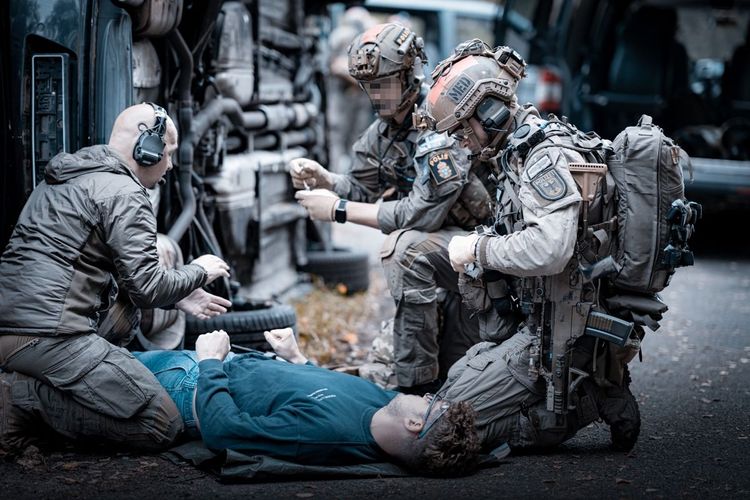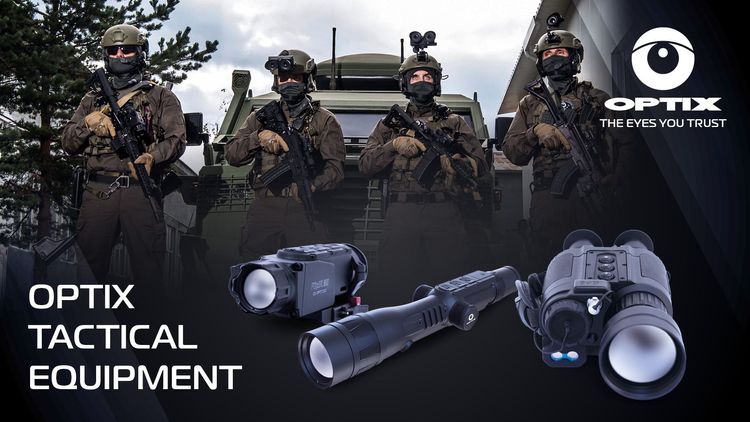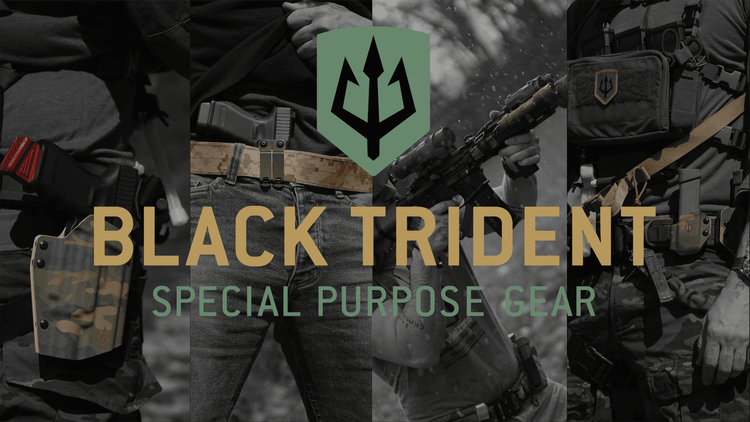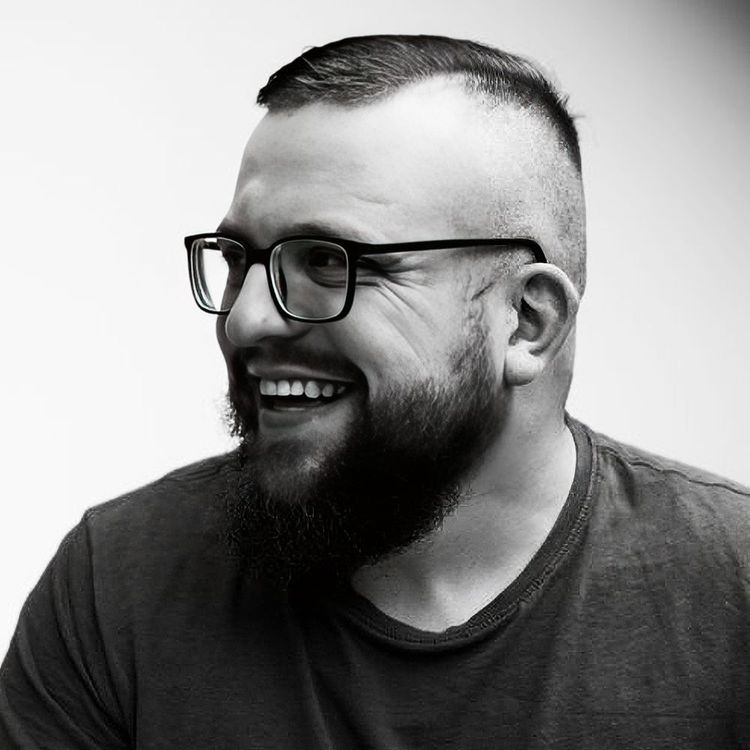And suddenly there's a boom. “Shh**!, Mike got hit!”
What sounds like fiction is reality, has often been reality and will often be reality in the future. Suddenly everything turns red, everyone panics. And now? Take action.
I have always been fascinated by emergency and trauma medicine and unfortunately have often been involved in it. And that's without even being in the emergency services. These situations can happen to you and me at any time, just a few examples: Your nephew accidentally sets himself on fire. A car shreds the crash barrier next to your house. You are working in a country in crisis and the situation escalates. None of these are made-up situations, but rather excerpts from my own personal experiences in recent years. None of these situations took place in a country with a NATO mission or on duty. Not once did it involve a gunshot wound. And yet we're talking about TCCC here? How does that fit together? And what is this TCCC anyway?
"TCCC - Tactical Combat Casualty Care"
"TCCC" originally referred only to the guidelines of the Committee of Tactical Combat Casualty Care, a committee that defined the basic principles of tactical casualty care in the 1990s in response to Somalia and Mogadishu. Today, the term essentially refers to casualty care in a "high-stress" environment. A "high stress environment" (or, in military terms, a "tactical situation") in this context can literally be anything. The dog that fatally bit the injured man is still running around the scene. The soldier who was shot is still in an active firefight. Or the car in the guardrail while traffic is still passing at 90 km/h. So we are talking about ongoing situations with maximum risk to life and limb. These situations can occur anywhere, not just in official situations.
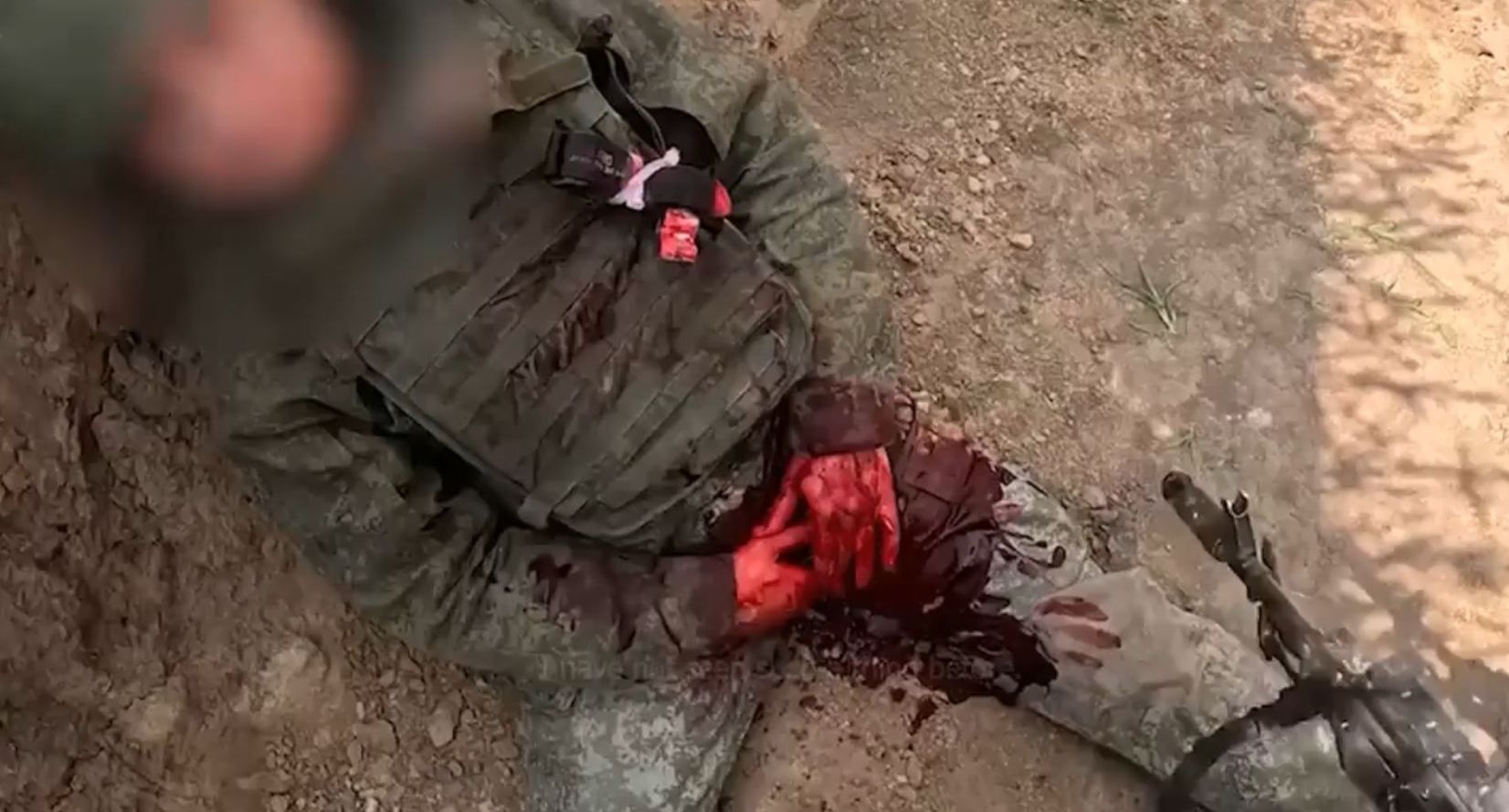
Picture above: The absolute worst case: An active firefight, an (obviously arterial) bleed, and the tourniquet is probably fixed with cable ties due to a lack of training. Proper training is crucial for such situations. Source: Youtube.de
They can take place in everyday life or on the shooting range. While many take handgun or rifle courses, how many take medical courses? How many get regular training? This is where the "gun user bubble" would have a great opportunity to gain more recognition in society as a whole and at the same time make an important contribution to safety. Because, at least in my experience, in situations where medical help is needed (e.g. traffic accidents), sooner or later you end up talking to someone involved. If a sentence like: "I am a hunter, and for me a good medical training is part of taking responsibility for the hunting ground, the game and the equipment", gets dropped - then you are not only a valuable asset in a critical situation, but you also have an interesting conversation starter. But that's just an aside.
Our author Alexander Roßmanith, a paramedic himself, put it this way:
"Whether it is cardiac arrest, airway obstruction in an unconscious person, or a major blood vessel injury, the first responder makes all the difference. Hands-only CPR, the recovery position or the tourniquet are the victim's only chance of survival when the worst happens and every minute counts. [...] Without first responders who take decisive action in the first few minutes, some patients would be lost".
Mission success requires tactical equipment you can trust in any environment. OPTIX Tactical Equipment ensures reliability and performance in every operation.
And what happens in such a course?
The “FASH” course from Eynalius now serves as an example. “FASH” stands for ‘First Aid for Sports Shooting and Hunting’. Wait a minute. What is what now? “TCCC”, ‘FASH’, ‘Stop the Bleed’ - so many terms! Correct. For legal reasons, however, only the original, 8-day “PHTLS (”Pre Hospital Trauma Life Support“) TCCC Combat Medic courses” are allowed to call themselves that. “TCCC” as an abbreviation has simply become a commonly used synonym for tactical casualty care. Ultimately, however, they all teach the same thing, only the nuances differ. How to use a tourniquet or a chest seal and when you don't need the latter, for example - you will always find this in these courses. No matter what they are called. It should be clear that the scope of the 8-day Combat Medic course is different from that of an 8-hour course. Such a “course in tactical casualty care” is therefore very different from a “first aid” course, as required for everyone's driver's license. While there you mainly learn how to react in everyday emergencies, such specialized courses are much more demanding. You realize this the first time you work on a simulator that realistically simulates arterial bleeding. At that moment, you realize that treating a serious injury requires much more than applying a simple bandage. When you are limited to the contents of a standard first aid kit, you quickly reach your limits. But this experience is incredibly valuable because it gives you a realistic understanding of how complex and challenging these emergency situations really are. And it's not just about having the knowledge, it's also about being able to take effective and precise action under extreme pressure.
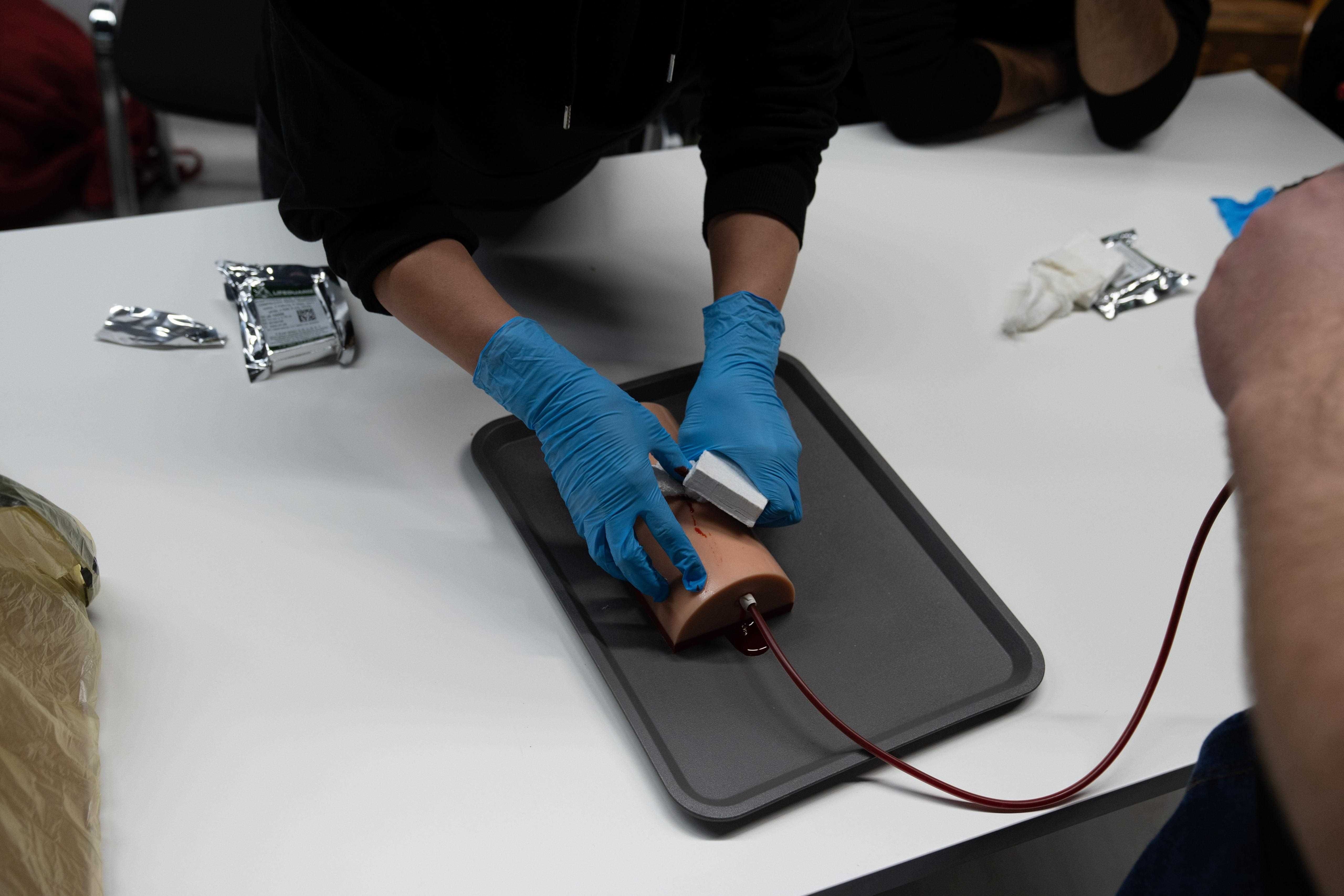
Picture above: What is “woundpacking”? What needs to be considered? All of this is covered in such courses. Source: Enyalius
The tools.
A not insignificant part of the courses is the "non-medical" aspect. Both the legal framework and the choice of the right equipment play a decisive role. Myths like “If you accidentally break a patient's ribs during a CPR, you'll go to jail.” We've all heard them at some point. And as funny as these myths sound at first: There are many serious misconceptions circulating around the topics of medical legalities and equipment. So if you decide to take such a course, we congratulate you. At the same time, we would like to make a direct appeal to you: When choosing a course provider, make sure that the topics of equipment (“How do I put together an IFAK?”) and the legal situation (“Am I even allowed to put on a tourniquet in an emergency situation?”) are also covered. Because both are just as much a part of the tools of the trade as medical knowledge and ensure the necessary confidence to act in an emergency situation.
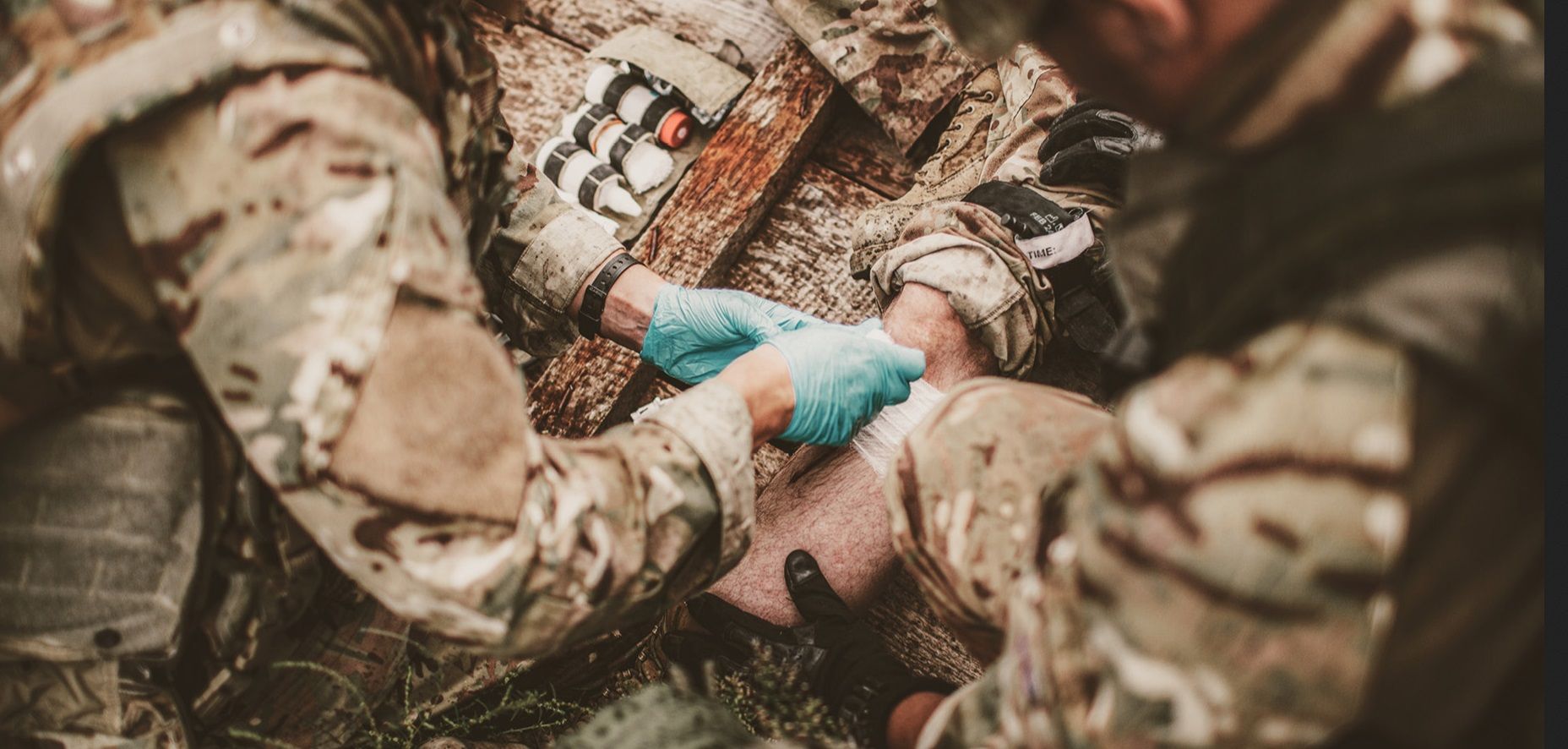
Picture above: Choosing the right equipment when buying as well as when using it is crucial: “Which Israeli can I buy without hesitation?” and “Do I have to use an Israeli now?” are important questions. Source: Carl Regimus Medical School
"Who do you meet at those classes?"
That was one of the first questions I asked myself on my first class in this area many years ago: “There must be some really experienced people there, all much more medically experienced than me!” William Wanschura, founder of “Enyalius”, replied:
“People from all walks of life come to our courses. Of course, there are also participants with a medical background, but the majority are “normal” hunters, marksmen and members of the authorities. Everyone is picked up at their level of knowledge.”
And I can confirm that. Don't be afraid to sign up for a course. You can't make a fool of yourself by taking part. On the contrary, it's a great way to expand your knowledge and prepare yourself for real emergency situations. It is important that you invest in your own training. After all, accidents happen here too - be it on the shooting range or while hunting. You don't have to be deployed in Afghanistan for that.
One important thing at the end: Of course, these courses will not make you a “Combat Medic” or a certified “18D Special Forces Medic”. It's okay not to know everything. The aim is not to abolish the rescue chain, but to enable you to bridge the gap until this rescue chain takes effect. You must also be aware that lifelong learning does not stop after you have completed a course. It actually only begins then. Regular practice is therefore a matter of honor.
Cover picture: German Federal Police
Mission success requires tactical equipment you can trust in any environment. OPTIX Tactical Equipment ensures reliability and performance in every operation.
Black Trident: Special Purpse Gear & Training. Your Gear is our responsibility. Now, your training is too.

